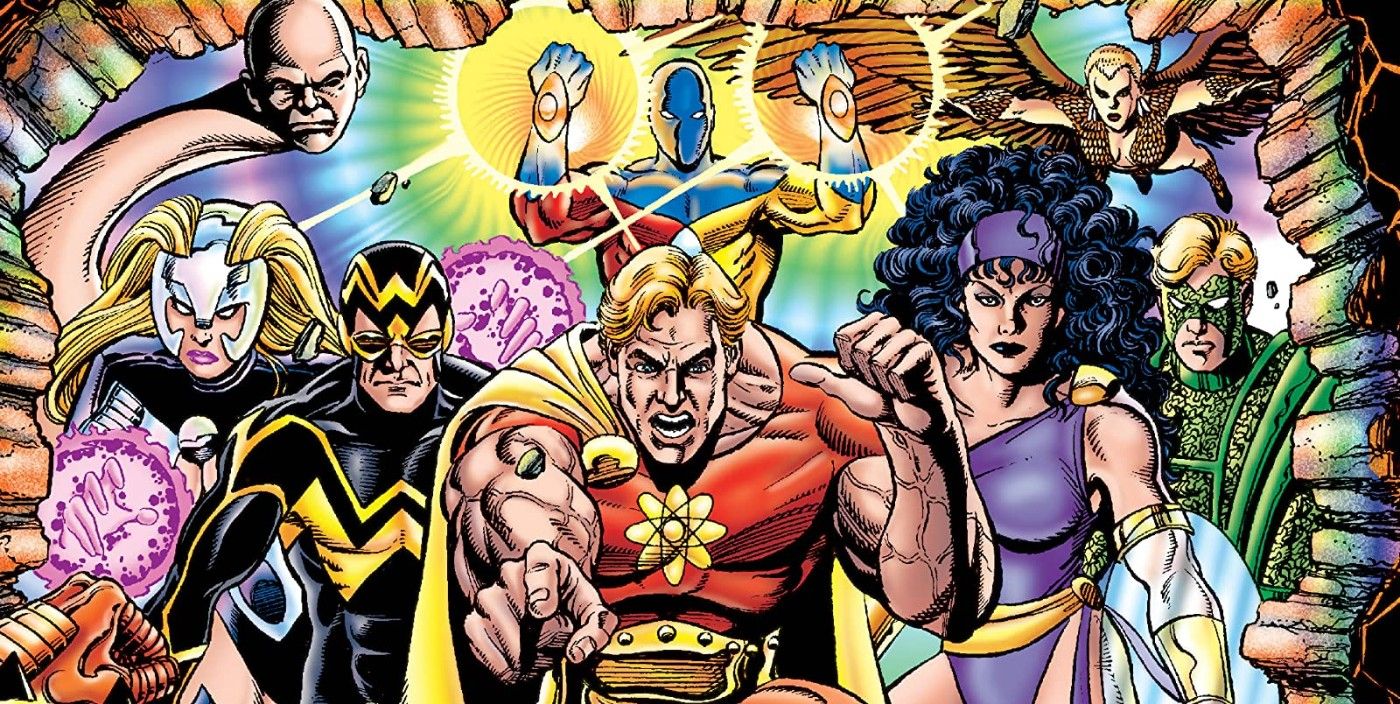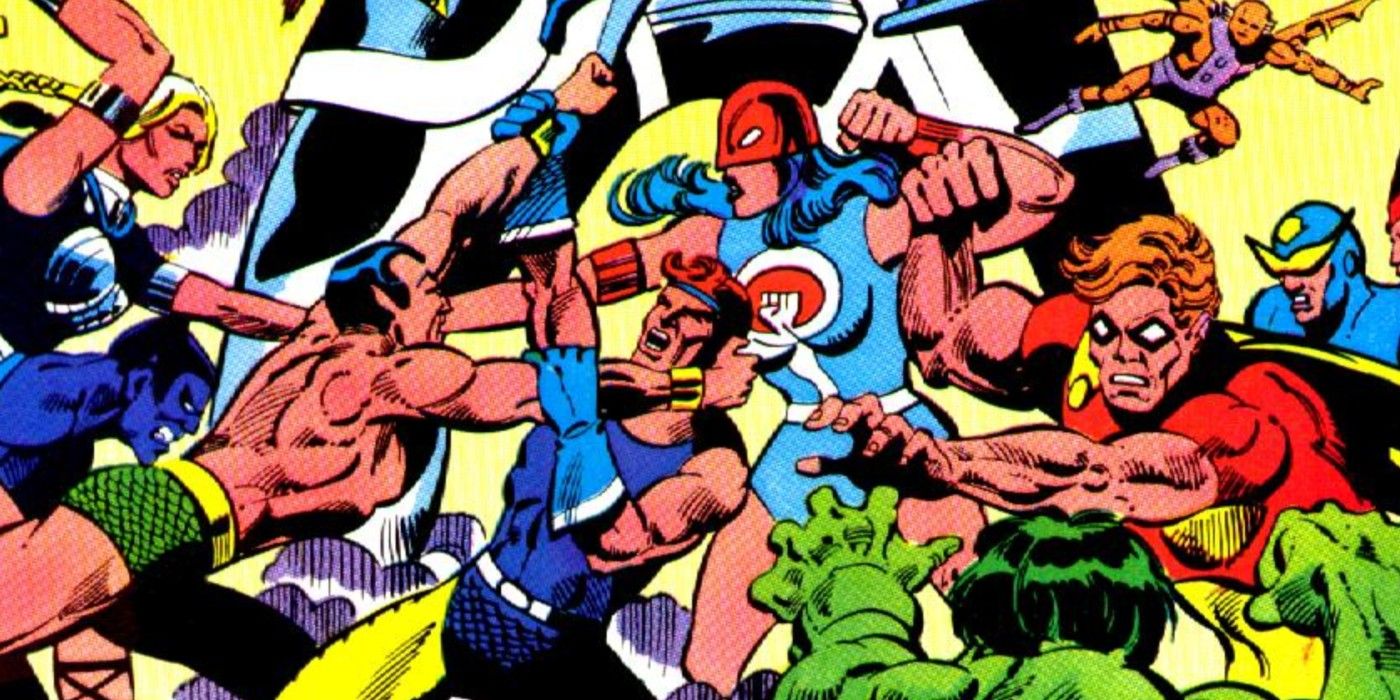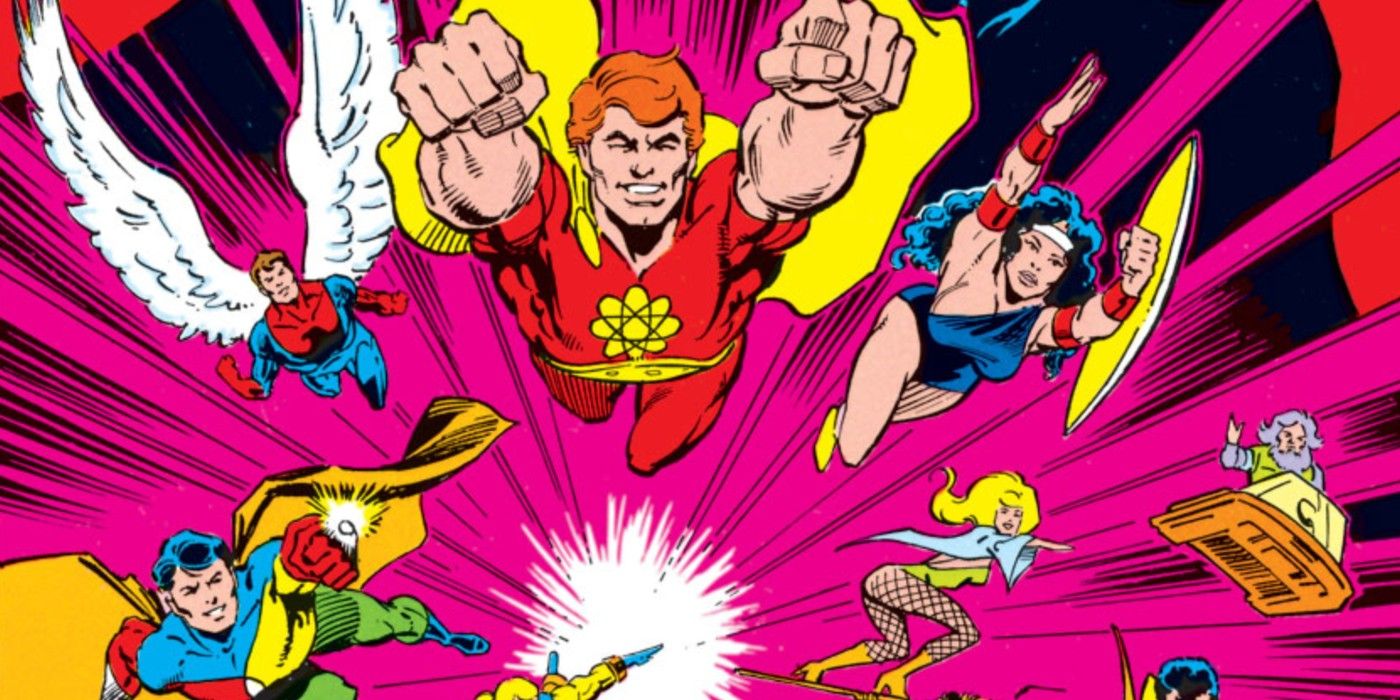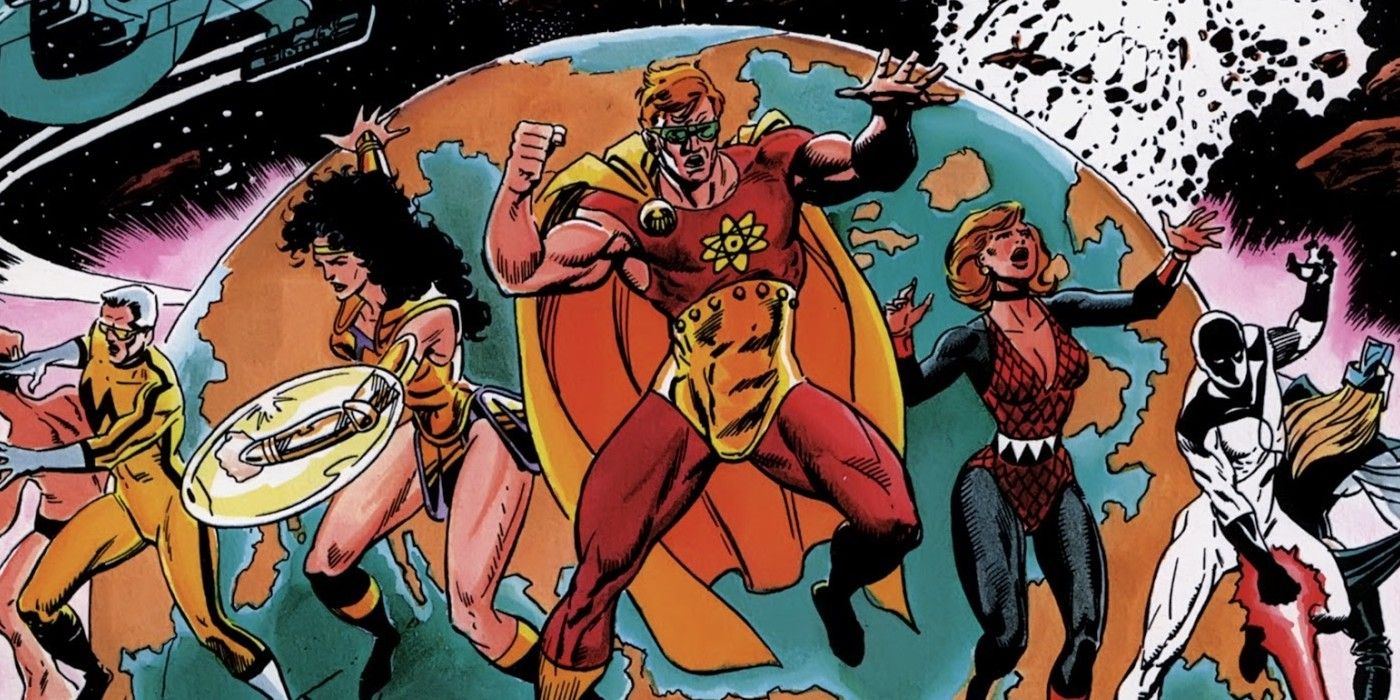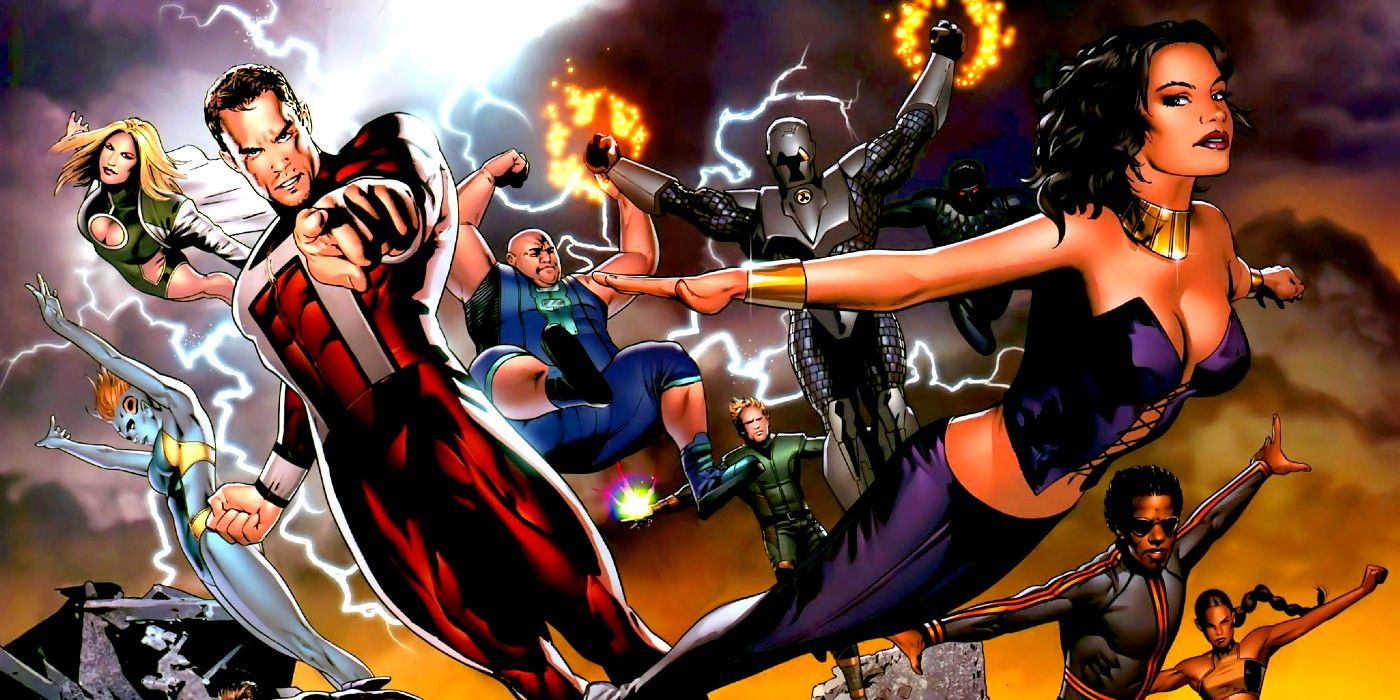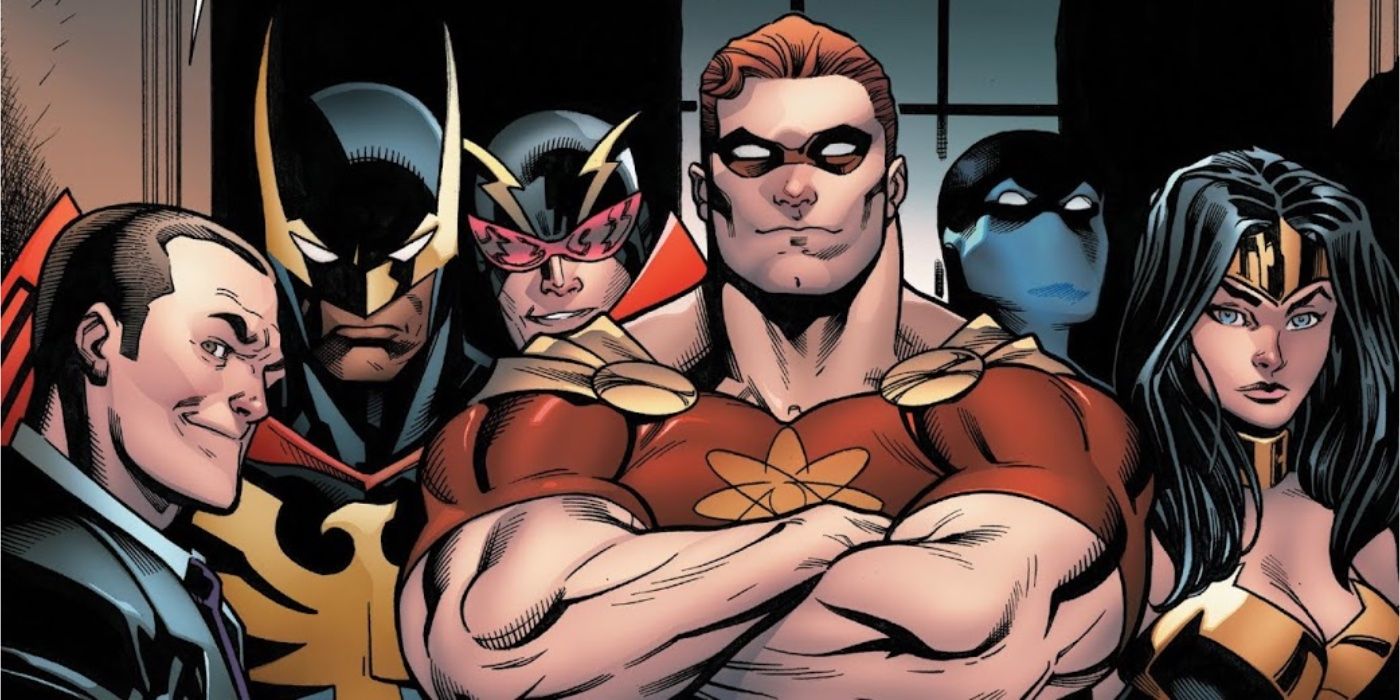Long before The Boys brought Justice League parodies into the spotlight, Marvel had their own League pastiche, the Squadron Supreme. Through their decades of appearance in the Marvel Universe, the team has been villains, heroes, anti-heroes, and every shade of gray in between. Far from a simple parody though, the Squadron is a fascinating group who have deeper ties to the Marvel Universe than their humble origins would suggest.
Now, the Squadron is set to become more relevant than ever as readers will see what the Marvel Universe would look like if they were the premier superhero team in the upcoming Heroes Reborn event, which will imagine a world where - with no Avengers - they're Earth's Mightiest Heroes. But how did they reach this point?
Squadron Sinister
Long before the team grew into complex characters though, they were far more one-note. Created in 1969 by writer Roy Thomas and artist Sal Buscema, the Squadron was a group of villains who fought the Avengers. In this first appearance, the team was rather bare consisting only of Hyperion (Superman), Nighthawk (Batman), Doctor Spectrum (Green Lantern), and the Whizzer (Flash). They initially debuted as pawns of the Grandmaster but were quickly dispatched by the Avengers.
In this first appearance, the Squadron appears more as a fun jab at Marvel's competition. The four team members featured may resemble their DC counterparts in terms of looks and powerset, but that's about where the similarities end. Luckily, Roy Thomas and artist John Buscema would see the team's potential and create a more heroic version of them, the Squadron Supreme.
Early Appearances
Now firmly established as heroes from an alternate universe, the Squadron's most iconic lineup would slowly be introduced. They would pick up pastiches of other Justice League members such as Power Princess (Wonder Woman), Golden Archer (Green Arrow), Arcanna (Zatanna), Blue Eagle (Hawkman), Amphibian (Aquaman), Lady Lark (Black Canary), Tom Thumb (Atom), and Nuke (Firestorm).
Though this version of the team were indeed heroes, they would still often come into conflict with Marvel heroes such as The Avengers. Their biggest moment was when they were brainwashed by the villain known as the Overmind. This storyline would see the Batman-like Nighthawk become president and the brainwashed Squadron causing a great deal of damage to their world. As the only member not under mind-control, Hyperion traveled to the main Marvel Universe, where he convinced the Defenders to help him. Together they freed the Squadron and defeat the Overmind. Their world was in left in shambles though, setting up the story of their own graphic novel.
Squadron Supreme
Largely considered to be writer Mark Grunewald's masterpiece, this 1985 series was a landmark moment for comic books. This 12-issue series deconstructed the idea of superheroes a full year before Watchmen.
The story follows directly from their previous appearances. In the aftermath of the Squadron's brainwashing, their world is in complete disarray. To solve this, the Squadron takes more and more control of their world until they are the sole government. Fueled by the genius of Tom Thumb, the Squadron developed technology to mindwipe villains and turn them into heroes. This caused a schism in the group that made Nighthawk create a group of villains meant to oppose the Squadron, leading to Marvel's first superhero civil war.
By the end of the series, Golden Archer, Nuke, Blue Eagle, and Nighthawk are all dead and the remaining Squadron members realize the error of their ways and end their utopia problem.
One of the reasons the series works so well is that it doesn't feel meanspirited. The Squadron undoubtedly goes too far in their attempts to fix the world, but they never cross a line or become monstrous as many future pastiches of the Justice League would. Grunewald was so proud of this graphic novel that he even had his ashes mixed into the trade.
Death of a Universe
After the critical acclaim and runaway success of their limited series, the Squadron returned in a direct sequel titled Squadron Supreme: Death of a Universe. As the title suggests, the Squadron confronts the potential death of their world at the hand of the villain the Nth Man. When he is transported into the Squadron's universe, his ability to warp space and time threatens to consume the sun and kill all life on earth.
The Squadron defeats the Nth Man by having him swap roles with Arcanna's newborn son, Benjamin, who was destined to become his universe's Sorceror Supreme. Though this saves their world, the team is banished to the main Marvel Universe. After some time in the main Marvel universe, they returned to their world which was taken over by a new group of superpowered beings.
Despite Grunewald returning for the sequel, it wasn't nearly as well-received as the preceding series, inevitably limiting their future appearances in the mainstream Marvel Universe. The team would lay mostly dormant until they were rebooted in the early 2000s.
Supreme Power
As part of Marvel's attempt to create more adult-oriented stories, they took another stab at the Squadron Supreme with the series Supreme Power. Furthering Hyperion's connection to Superman, this story focussed on Hyperion's origin as an alien who came to earth as a child. The government ends up recruiting him, which leads to other superhumans coming forward. Over time, the new government-backed Squadron sees the return of many classic members such as Power Princess and Nighthawk. The biggest change comes from the team's speedster who is now the Blur instead of Whizzer.
The initial series by writer J. Michael Straczynski was well regarded for its political relevance and more realistic approach. Their biggest moment, and their unfortunate low point, would come in their crossover with the Ultimate universe, Ultimate Power. In a cliche as old as the medium, a series of increasingly absurd misunderstandings forces the Squadron to fight the Ultimates.
Despite Ultimate Power's poor reception, the team would continue to appear. In a reference to the team's origin, the Supreme Power version of the team would fight a completely totalitarian version of the team appropriately titled the Squadron Sinister. This would mark the end of the Supreme Power era of the team, hailing the classic Squadron's return.
Squadron Supreme of America
Now firmly established as a part of the main Marvel universe, the squadron returned as a patchwork group formed from the pieces of past Squadrons. Though they were mostly heroic, they came into constant conflict with Namor, who had killed members of the team. Phil Coulson would later recruit the team to be the Squadron Supreme of America. Humorously, they ended up defending Washington D.C. and earning the title of D.C.'s mightiest heroes. They also played an important role in the War of the Realms event.
This new team plays up the team's more negative aspects, meaning they once again straddle the line between heroes and villains. Their title of Squadron Supreme of America also further ties them to the Justice League, though unfortunately their roster is pared down to just Hyperion, Nighthawk, Power Princess, Doctor Spectrum, and Blur.
Much like the League, the Squadron Supreme is a team that has had its ups and downs. The best versions of them use the Squadron to tell stories about the Justice League that DC wouldn't tell. While this was unique for many of the team's early appearances, it's hardly groundbreaking in a world where superhero deconstructions like The Boys have seen major success. Still, it's a testament to the strength of their early stories that the Squadron Supreme still remains one of the best Justice League pastiches.

